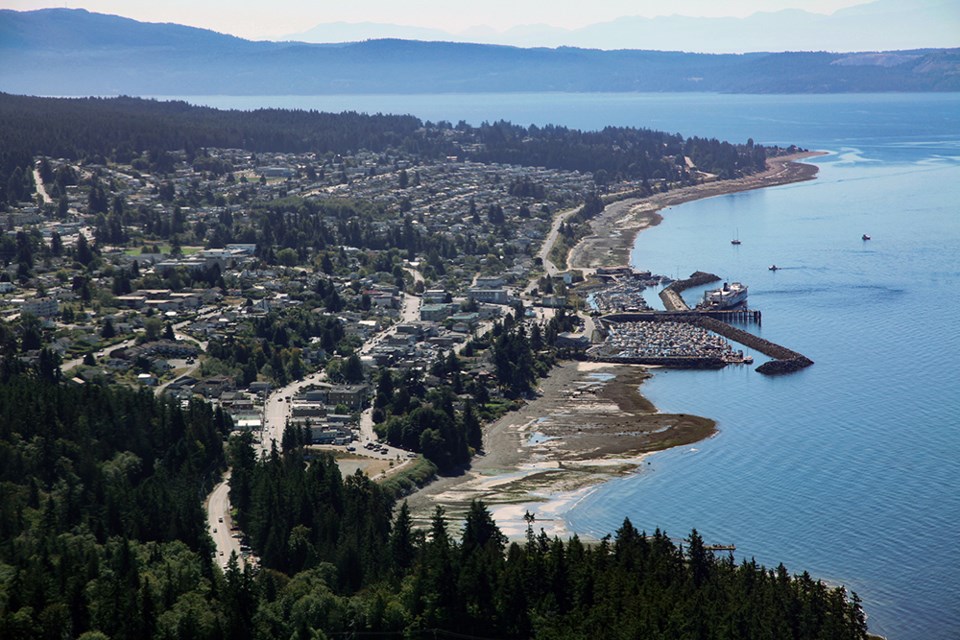City of Powell River councillors will direct staff to proceed with the city’s wildfire hazard development permit designation to address areas susceptible to wildfire risk.
At the January 21 committee of the whole meeting, chief administrative officer Lisa Bhopalsingh said councillors had been provided a report regarding a permit area project, which is something that has been on the city’s work plan for some time.
“It is also helping fulfill the background work for the sustainable official community plan and the timing is very timely, with what is going on down south,” said Bhopalsingh. “What director of planning services Jason Gow is looking for is direction, through the consultant we are working with, on what buffer we would like to see the development permit area applied for, and what requirements need to be made for households or buildings within that buffer to maintain a level of fire protection.”
Gow he was presenting information regarding the wildfire development permit area project. He said in the summer of 2024, Frontera Forest Solutions was retained by the city to lead implementation of a wildfire hazard development permit area. He indicated that anticipated outcomes of this project include the identification of areas susceptible to wildfire risk, and the development of accompanying guidelines and mapping products.
“These guidelines generally cover components such as subdivision layouts, fire resistant building materials and landscaping and vegetation guidelines,” said Gow. “Staff and Frontera Forest Solutions are looking for some guidance from council on a key element of how the development permit area will be applied.”
Gow said a wildfire buffer is measured as the distance extending outward from areas near burnable fuels, which are vegetated areas with potential to carry wildfire. Examples are forests with coniferous components, grass fuels and slash areas, said Gow. Buffer distances of 30 metres, 100 metres and one kilometre have been put forward by the consultant.
“Research conducted by Frontera suggests that the use of a 100-metre buffer would be the most suited to managing anticipated wildfire behaviour, FireSmart guidance and any regulatory burden associated with the designation of a new development permit area, given the geography of the city’s wildfire interface,” said Gow. “A 100-metre buffer was also found to be the most common approach in comparable communities.
“Implementation of a 100-metre buffer would capture all structures at the high risk of exposure to radiant heat from wildfire. Any residual risk in this scenario would most likely be low, with smaller pockets of moderate risk.
“Alternatively, the city could adopt a larger buffer to minimize risk further. The downside of this approach is it would also capture many more properties determined to be at low wildfire risk.”
Gow said this means additional staff time would be required to process and review 100 per cent of the development applications for adherence to wildfire guidelines. It would also add additional cost and time to the development process, not only to the city, but also to developers in the community, he added.
Gow said the city’s authority to require changes to existing properties to make them more wildfire resistant only happens at the time the property is redeveloped.
“This means the reduction of risk, even where all properties in the city are captured by wildfire development permit area, is limited to how quickly parcels are redeveloped,” said Gow. “Realistically, in our community, we are talking about something that would be measured in decades.
“At its core, selection of an appropriate wildfire buffer is an exercise in determining risk tolerance. Based on the recommendation from Frontera, staff recommends that council determine that the 100-metre wildfire buffer is acceptable.”
Councillor George Doubt said he understood Gow was asking councillors to decide on fire interface buffers to put in a future official community plan. He said wildfires were probably a lot more in people’s minds after having observed what was going on in California.
“The proposal here is we should think about setting a distance of 100 metres away from a high fire hazard area to require that people, if they are going to do any development in those areas, to have a development permit,” said Doubt. “From all the reports I read, the development permit can do one of two things. They can either get rid of the fire hazard – get rid of the fuel by cutting down trees and harvesting bushes and changing the landscaping around homes – or, changing the ways houses are built by requiring them to be more fireproof.”
As for future direction, Gow stated in a written response to questions from the Peak, now that staff have direction from council on the wildfire buffer, they will be working with the consultant to draft appropriate development permit guidelines that reflect best practice. These draft guidelines would again be presented to council for their review and approval before a process to include the new development permit area in the official community plan would be initiated, according to Gow. He confirmed that the 100-metre buffer would apply to new development and future redevelopment, but not to existing structures.
The committee voted unanimously to direct staff to proceed with using a 100-metre wildfire buffer as the basis for the city’s wildfire hazard development permit area designation.
Join the Peak's email list for the top headlines right in your inbox Monday to Friday.



